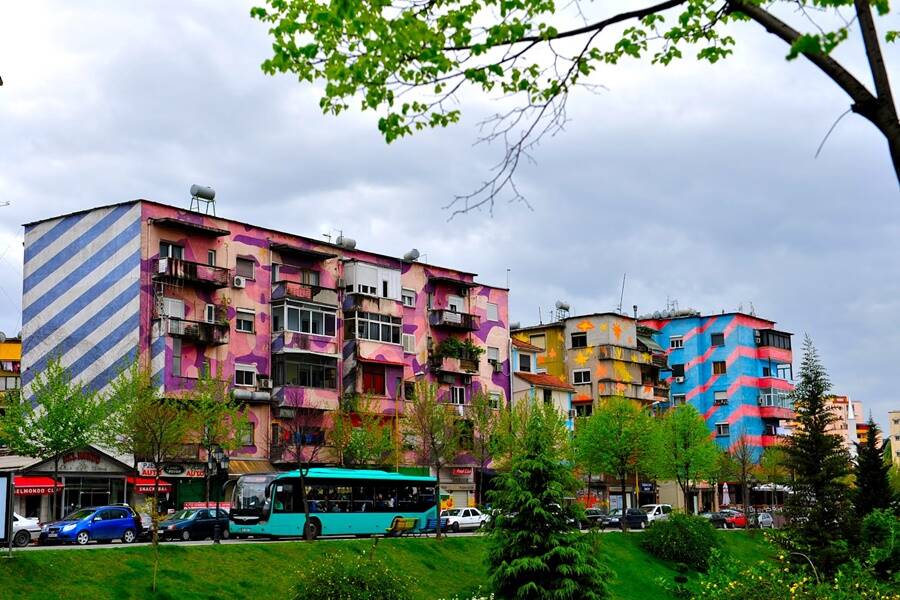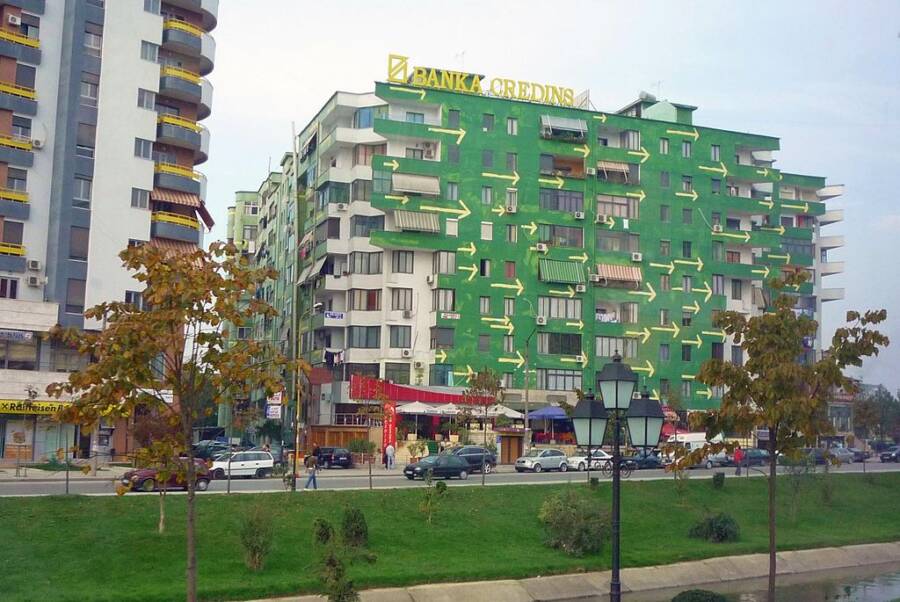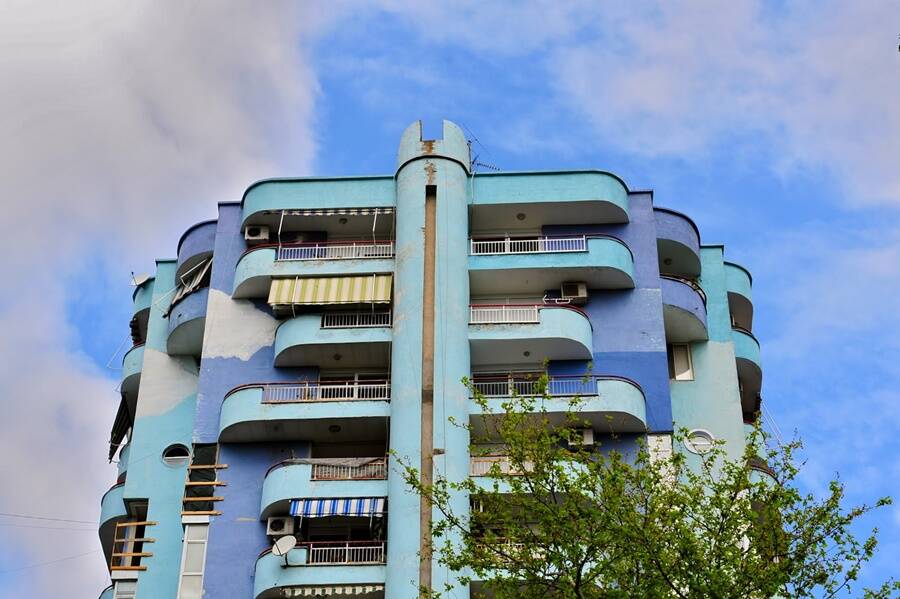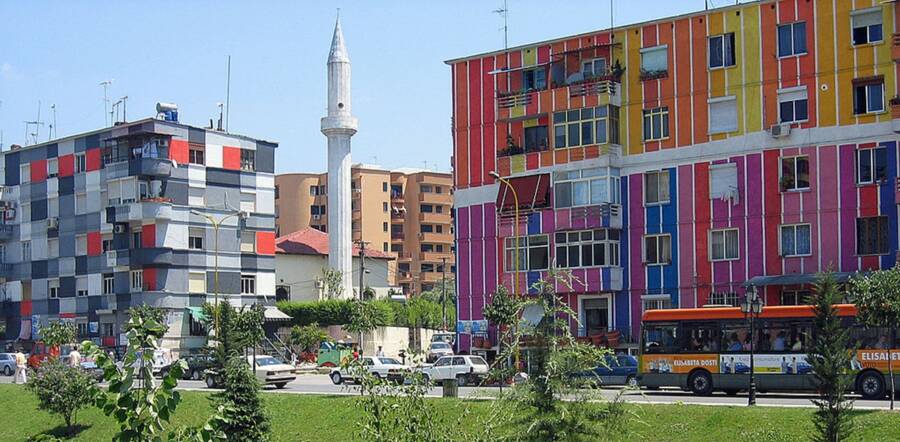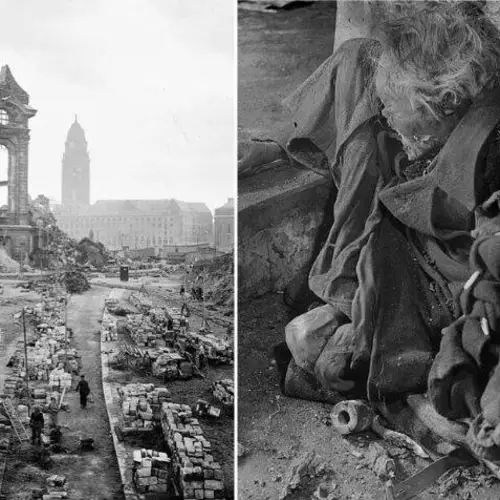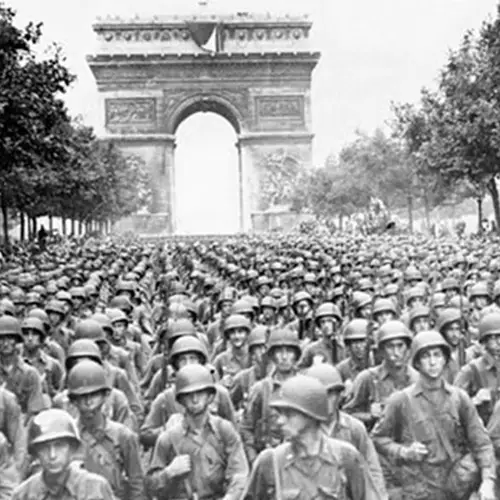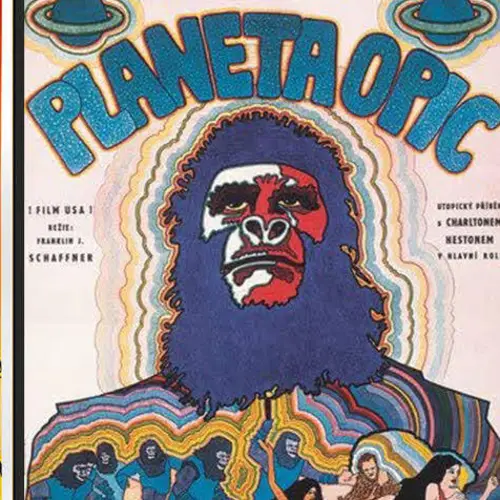Up until 1992, Albania was ruled under a merciless communist regime. But in 2000, the mayor of the nation's capital launched a city-wide beautification program — to stunning results.
Albania's capital Tirana was once an urban blight, tainted with decay and destruction wrought by its political history. But all that changed after the city's former mayor-turned-Albanian-Prime-Minister Edi Rama launched an expansive redesign campaign.
The once stark and dilapidated buildings of a communist regime were replaced with bright colors of orange, green, blue, and yellow. Playful patterns and whimsical geometric shapes were painted over run-down exteriors. Now, Tirana's bleakest facades are the city's most distinctive architectural features.
Take a look at some of Tirana's most eye-catching redesigns in the gallery above.
Albania Was Once A Communist Regime
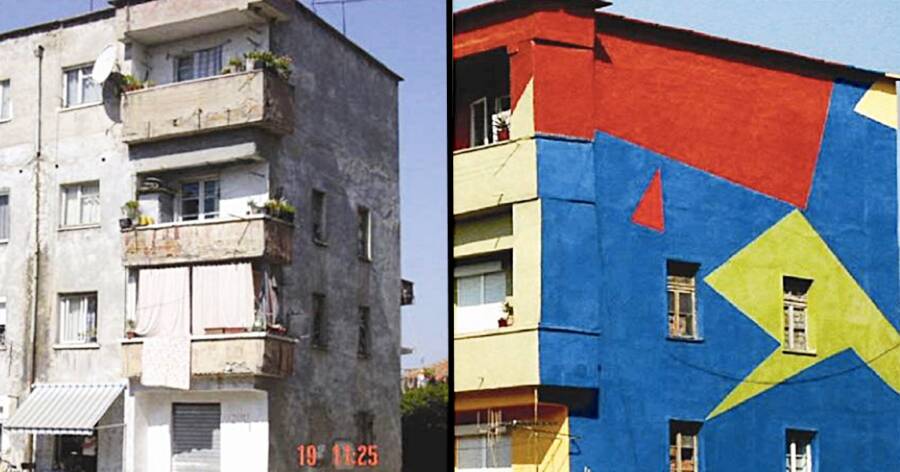
Edi Rama via TED BlogA before and after of the first building painted under Edi Rama's redesign campaign.
Albania has a long and complicated history. Because of its location on both the Adriatic and Ionian Seas, Albania was invaded by various civilizations in their quests for expansion. Consequently, it was inhabited by the Illyrians, Thracians, Ancient Greeks, Romans, Byzantines, Venetians and Ottomans.
Even when Albania was freed from the Ottoman Empire by King Zog I in 1912, it remained contested territory for all the great powers of Europe. Shortly before World War II, the country became heavily dependent on resources sent by Mussolini-led Italy.
In 1939, Italy annexed Albania. Two years later, a devout Stalinist named Enver Hoxha became head of the new Albanian Communist Party, which he built out of Tirana, the capital city. Things got significantly more complicated when the Germans invaded the country during World War II. The invasion caused various resistance groups to fight against the Nazis and each other.
But the opportunity for greater power arose for Hoxha when the Germans fled at the end of the war. An anti-Fascist congress declared Hoxha as the president of a new democratic Albania. What followed was a political takeover that slaughtered 400 of his opponents in the heart of Tirana.
Hoxha's merciless rule was deemed legitimate and backed by both the Allied powers and the Soviet Union. For the next 41 years, Hoxha's administration ruled Albania under iron-clad communism. He transformed Albania into one of the world's most isolated nations and kept tens of thousands of political prisoners.
Hoxha was the longest-ruling Communist leader in history at the time of his death in 1985. It wasn't until a 1992 election which saw the victory of the nation's Democratic Party that the Communist rule ended.
Like most young democracies, Albania struggled to find stability. Despite no longer being under communist control, officials made little economic progress in the following years.
The violence and oppression that Albania endured over the last century remained visible. In Tirana, decaying landmarks and illegal construction sites stood as striking reminders of the country's past struggles.
Mayor Edi Rama Revives Tirana
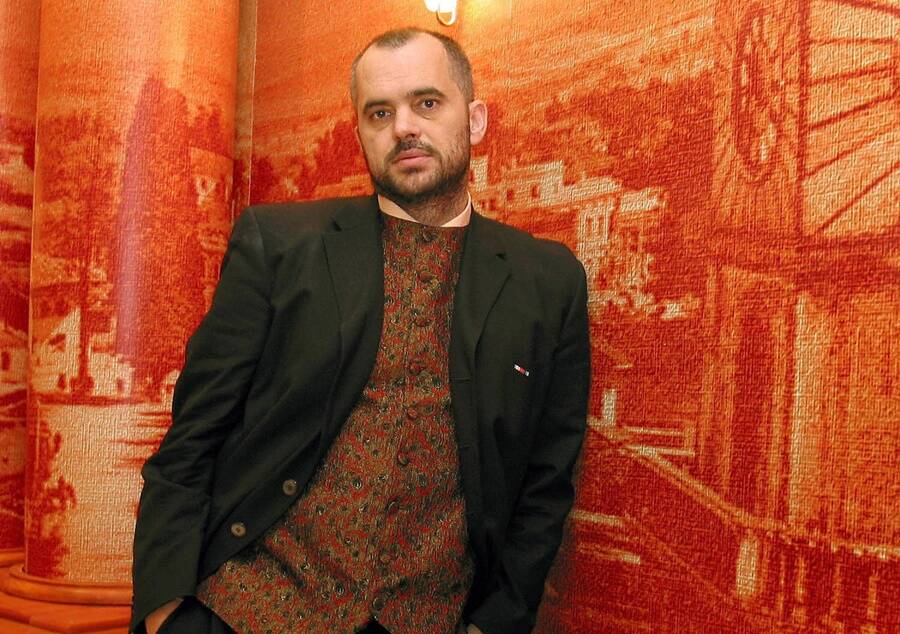
Gent Shkullaku/AFP via Getty ImagesAlbanian Prime Minister Edi Rama used his background as an artist to save his city from blight.
By the time locals elected Edi Rama as mayor of Tirana in 2000, the Albanian capital still reflected its rough past. Rama, a former artist, looked to art to help rejuvenate the city.
He wanted to paint the buildings in lively colors and designs in order to "revive the hope that had been lost in my city." The reaction was immediate. After revealing the first painted building, crowds gathered to see it, causing traffic jams. The painted walls had struck a chord among residents.
But EU officials, who controlled the funding for Tirana's rebuilding, opposed Rama's project. They objected to the splashy colors because it did not meet EU standards. But Rama refused to compromise — even when those officials threatened to block the city's funds.
"I told them no, sorry. Compromise in colors is grey," recalled Rama during a TEDxTalk presentation he gave at Thessaloniki. "And we have enough grey to last us a lifetime."
With that, the campaign to revive the capital through architectural art continued, and the colors not only changed the look of the city but also the attitude of the people.

Nicolas Vollmer/FlickrRama was later elected the Prime Minister of Albania.
"When colors came out everywhere, a mood of change started transforming the spirit of the people," Rama said. "Beauty was giving people a feeling of being protected. This was not a misplaced feeling — crime did fall."
Although the painted buildings hardly affected the country's economy, they did spark hope for prosperity. Rama was later elected as Prime Minister of Albania in 2013 and continues to serve as of 2020.
Once remnants of Albania's communist past, the capital's buildings have now beautified both the cityscape and its residents' attitudes. The different shapes, colors, and patterns that adorn the buildings' exterior have also become tourist attractions for Tirana visitors.
It just goes to show that a little bit of paint and imagination can go a long way.
Next, take a look at these 33 abandoned monuments from the heyday of communism. Then, check out 44 evocative images from the Prague Spring.

